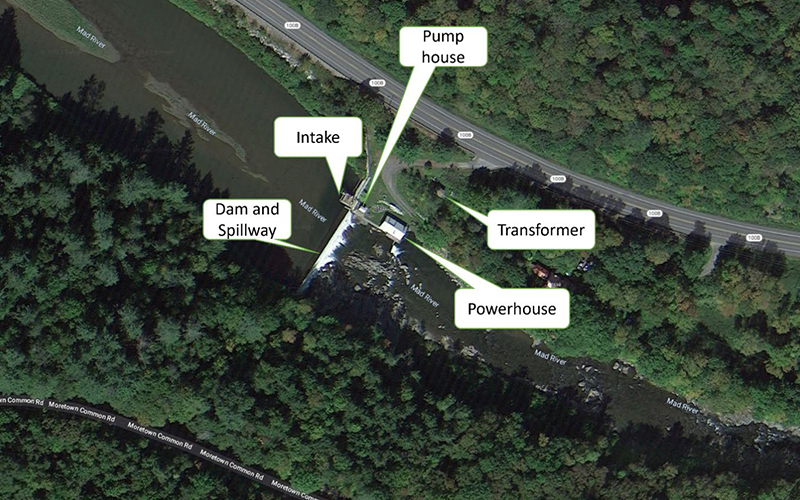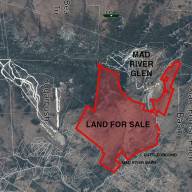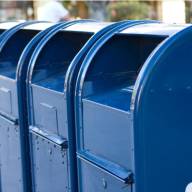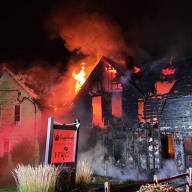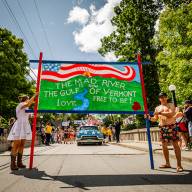It’s known by the rather anodyne Moretown No. 8, and has stood for 112 years. For nearly 30 of those years, the concrete dam on the Mad River just upriver from the confluence with the Winooski River was dormant, powering nothing, before returning to use in 1988. The No. 8 and Moretown’s No. 2, also known as the Middlesex dam, survived the horrific flooding of November 1927; a third Moretown dam, on Lover’s Lane, did not, according to a history of the town created in 2000 by the Moretown Historical Society. The Moretown No. 8 was rebuilt after the flood and continued to operate for decades before its hiatus. At one point under Green Mountain Power Corporation ownership, Moretown No. 8 had a power house downstream of the dam’s location.
The dam has gone through a few owners over the years, and is now privately owned by Moretown Hydroelectric LLC. Moretown No. 8 provides hydroelectric power and undergoes regular inspection by federal officials, according to former state river ecologist for the Vermont Department of Environmental Conservation and Vermont Natural Resources river and dam ecologist Brian Fitzgerald.
Per an environmental assessment report filed with the Federal Energy Regulatory Commission, the dam typically generates about 2,100 megawatt-hours annually. The dam is known as a run-of-the-river operation, which, according to the U.S. Energy Information Administration, means that the dam’s turbine is mostly powered by the river’s current or flow (as opposed to the turbines being powered only by water falling due to a change in elevation). The water is directed to the turbine through a pipe called a penstock. The dam is currently awaiting a renewal of its license, continuing to operate in the meantime.
With recent flooding in Vermont leaving riverside residents wary across the state, neighbors driving by the Moretown dam might wonder about the risks that sediment buildup behind the dam poses to nearby homes and streets. Per the environmental report, the location has been dredged once in 10 years; it is not regularly cleared out. But, the report notes, the dam’s design likely allows any sediment that builds up during dry periods to be washed downstream when the river subsequently experiences a higher flow. The report concluded that, with some recommended environmental measures in place, the dam can be safely relicensed.
This story will continue next week with a more in-depth look at some of the environmental measures that the report suggests would be beneficial at the Moretown No. 8 site. Recreational considerations, wildlife impacts, and cultural resources are all part of the conversation. The Valley Reporter will also take a look at damage that the dam has sustained in previous flooding events in Vermont.


